This is a very thorough and extensive 35 page website about allopathic, holistic and integrative veterinary, cat / dog nutrition and what BigPharmaMafia, bad veterinarians and pet food companies who make very low-quality pet foods don’t or won’t tell you. It will always be a work in progress. The site is sometimes intentionally provocative & outspoken in order to disturb the status quo, which needs to be educated and must be changed! All of the information on this website is fact and has been extensively researched, sourced and documented and is extremely well received by both good veterinarians and pet parents, having had 500,000 hits in a single day!
Food Not Fit For a Pet
Each year, millions of dead dogs and cats are processed along with billions of pounds of other animal materials by companies known as renderers

Roger Biduk – Food Not Fit For a Pet
Jun 24th
 Roger Biduk says that you can tell right away if your veterinarian is looking out for the best interest of your pet. “If your veterinarian recommends annual/frequent vaccinations and/or a diet for your dog/cat such as Hill’s Prescription Diet, Purina, Pedigree, Iams, Eukanuba, Royal Canin, Ol’ Roy, Science Diet, etc or poisonous, toxic, possible carcinogenic, chemical insecticides/pesticides for heartworm/fleas in the form of pills, collars, injections or spot-on applications… run away! Talk
Roger Biduk says that you can tell right away if your veterinarian is looking out for the best interest of your pet. “If your veterinarian recommends annual/frequent vaccinations and/or a diet for your dog/cat such as Hill’s Prescription Diet, Purina, Pedigree, Iams, Eukanuba, Royal Canin, Ol’ Roy, Science Diet, etc or poisonous, toxic, possible carcinogenic, chemical insecticides/pesticides for heartworm/fleas in the form of pills, collars, injections or spot-on applications… run away! Talk 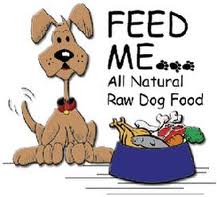 to a good holistic veterinarian, most of whom do inexpensive phone consultations.”
to a good holistic veterinarian, most of whom do inexpensive phone consultations.”
“The most frequently asked question in my practice is, “Which commercial pet food do you recommend?” My standard answer is “None.” I am certain that pet-owners notice changes in their animals after using different batches of the same brand of pet food. Their pets may have diarrhea, increased flatulence, a dull hair coat, intermittent vomiting or prolonged scratching. These are common symptoms associated with commercial pet foods.
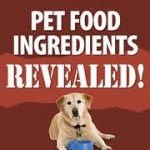 “In 1981, as Martin Zucker and I wrote How to Have a Healthier Dog, we discovered the full extent of negative effects that commercial pet food has on animals. In February 1990, San Francisco Chronicle staff writer John Eckhouse went even further with an exposé entitled “How Dogs and Cats Get Recycled into Pet Food”.
“In 1981, as Martin Zucker and I wrote How to Have a Healthier Dog, we discovered the full extent of negative effects that commercial pet food has on animals. In February 1990, San Francisco Chronicle staff writer John Eckhouse went even further with an exposé entitled “How Dogs and Cats Get Recycled into Pet Food”.
“Eckhouse wrote: “Each year, millions of dead American dogs and cats are processed along with billions of pounds of other animal materials by companies known as renderers. The finished product…tallow and meat meal…serve as raw materials for thousands of items that include cosmetics and pet food.”
“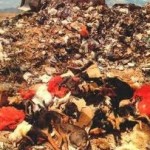 Pet food company executives made the usual denials. But federal and state agencies, including the Food and Drug Administration, and medical groups, such as the American Veterinary Medical Association and the California Veterinary Medical Association (CVMA), confirm that pets, on a routine basis, are rendered after they die in animal shelters or are disposed of by health authorities and the end product frequently finds its way into pet food.
Pet food company executives made the usual denials. But federal and state agencies, including the Food and Drug Administration, and medical groups, such as the American Veterinary Medical Association and the California Veterinary Medical Association (CVMA), confirm that pets, on a routine basis, are rendered after they die in animal shelters or are disposed of by health authorities and the end product frequently finds its way into pet food.
“Government health officials, scientists and pet food executives argue that 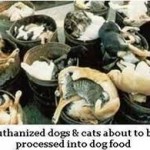 such open criticism of commercial pet food is unfounded. James Morris, a professor at the School of Veterinary Medicine at Davis, California, has said, “Any products not fit for human consumption are very well sterilized, so nothing can be transmitted to the animal.” Individuals who make such statements know nothing of the meat and rendering business.
such open criticism of commercial pet food is unfounded. James Morris, a professor at the School of Veterinary Medicine at Davis, California, has said, “Any products not fit for human consumption are very well sterilized, so nothing can be transmitted to the animal.” Individuals who make such statements know nothing of the meat and rendering business.
“For seven years I was a veterinary meat inspector for the US Department of Agriculture and the State of California. I waded through blood, water, pus and fecal material, inhaled the fetid stench from the killing floor and listened to the death cries of slaughtered animals.
“Prior to World War II, most slaughterhouses were all-inclusive; that is,  livestock was slaughtered and processed in one location. There was a section for smoking meats, a section for processing meats into sausages, and a section for rendering. After World War II, the meat industry became more specialized. A slaughterhouse dressed the carcasses, while a separate facility made the sausages. The rendering of slaughter waste also became a separate specialty, no longer within the jurisdiction of federal meat inspectors and out of the public eye.
livestock was slaughtered and processed in one location. There was a section for smoking meats, a section for processing meats into sausages, and a section for rendering. After World War II, the meat industry became more specialized. A slaughterhouse dressed the carcasses, while a separate facility made the sausages. The rendering of slaughter waste also became a separate specialty, no longer within the jurisdiction of federal meat inspectors and out of the public eye.
“To prevent condemned meat from being rerouted and used for human consumption, government regulations require that meat be “denatured” 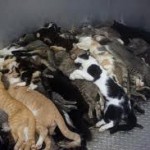 before removal from the slaughterhouse and shipment to rendering facilities. In my time as a veterinary meat inspector, we denatured with carbolic acid (a potentially corrosive disinfectant) and/or creosote (used for wood-preservation or as a disinfectant). Both substances are highly toxic. According to federal meat inspection regulations, fuel oil, kerosene, crude carbolic acid and citronella (an insect repellent made from lemon grass) are all approved denaturing materials.
before removal from the slaughterhouse and shipment to rendering facilities. In my time as a veterinary meat inspector, we denatured with carbolic acid (a potentially corrosive disinfectant) and/or creosote (used for wood-preservation or as a disinfectant). Both substances are highly toxic. According to federal meat inspection regulations, fuel oil, kerosene, crude carbolic acid and citronella (an insect repellent made from lemon grass) are all approved denaturing materials.
“Condemned livestock carcasses treated with these chemicals can become meat and bone meal for the pet food industry. Because rendering facilities are not government-controlled, any animal carcasses can be rendered, even dogs and cats. As Eileen Layne of the CVMA told the Chronicle, “When you read pet food labels, and it says “meat and bone meal”, that’s what it is: cooked and converted animals, including some dogs and cats.”
 “Some of these dead pets, those euthanized by veterinarians & already contain pentobarbital before treatment with the denaturing process. According to University of Minnesota researchers, the sodium pentobarbital used to euthanize pets “survives rendering without undergoing degradation”. Fat stabilizers are introduced into the finished rendered product to prevent rancidity. Common chemical stabilizers include BHA (butylated hydroxyanisole) and BHT (butylated hydroxytoluene), both known to cause liver and kidney dysfunction and ethoxyquin, a suspected carcinogen. Many semi-moist
“Some of these dead pets, those euthanized by veterinarians & already contain pentobarbital before treatment with the denaturing process. According to University of Minnesota researchers, the sodium pentobarbital used to euthanize pets “survives rendering without undergoing degradation”. Fat stabilizers are introduced into the finished rendered product to prevent rancidity. Common chemical stabilizers include BHA (butylated hydroxyanisole) and BHT (butylated hydroxytoluene), both known to cause liver and kidney dysfunction and ethoxyquin, a suspected carcinogen. Many semi-moist  dog foods contain propylene glyco, first cousin to the anti-freeze agent, ethylene glycol, that destroys red blood-cells. Lead frequently shows up in pet foods, even those made from livestock meat and bone meal. A Massachusetts Institute of Technology study, titled “Lead in Animal Foods”, found that a nine-pound cat fed on commercial pet food ingests more lead than the amount considered potentially toxic for children.
dog foods contain propylene glyco, first cousin to the anti-freeze agent, ethylene glycol, that destroys red blood-cells. Lead frequently shows up in pet foods, even those made from livestock meat and bone meal. A Massachusetts Institute of Technology study, titled “Lead in Animal Foods”, found that a nine-pound cat fed on commercial pet food ingests more lead than the amount considered potentially toxic for children.
“I have been practicing small-animal medicine for more than 25 years. Every day I see the casualties of pet industry propaganda. But the professors in the teaching institutions of veterinary medicine generally support an industry that has little regard for the quality of health in our companion animals.
“One last word of caution: meat and bone meal from sources not fit for 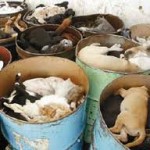 human consumption have found their way into poultry feed. This means that animal products rendered under questionable conditions are fed to birds that may wind up on your table. Remember this when you are eating your next piece of chicken or turkey.”
human consumption have found their way into poultry feed. This means that animal products rendered under questionable conditions are fed to birds that may wind up on your table. Remember this when you are eating your next piece of chicken or turkey.”
Dr Belfield is a graduate of Tuskegee Institute of Veterinary Medicine and is now in private practice in San Jose, California. Dr Belfield established the first orthomolecular veterinary hospital in the US. He is co-author of The Very Healthy Cat Book and How to Have a Healthier Dog. This article first appeared in Let’s Live Magazine, May 1992.) Read more on this article and on pet nutrition here.
“I can’t overstate how important the ingredients are in the food that you feed your pet every day. Nothing is more important in determining the health and lifespan of your animal companion than the ingredients in the food you give them. It’s your responsibility as a pet parent” reminds Roger Biduk.








